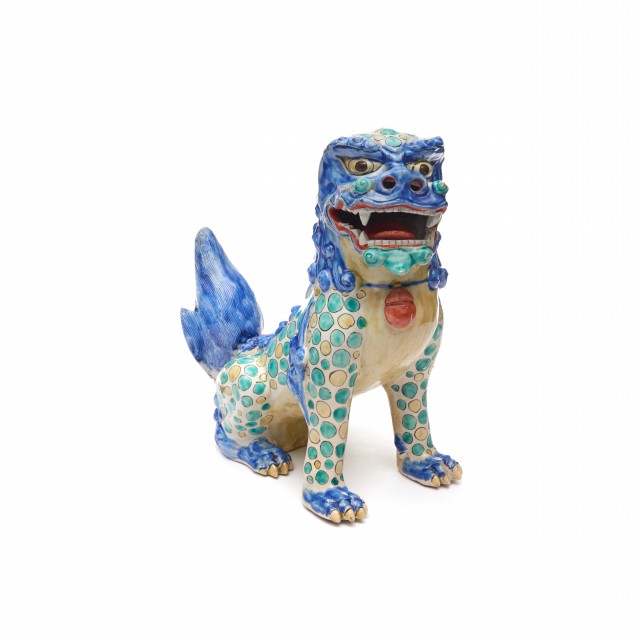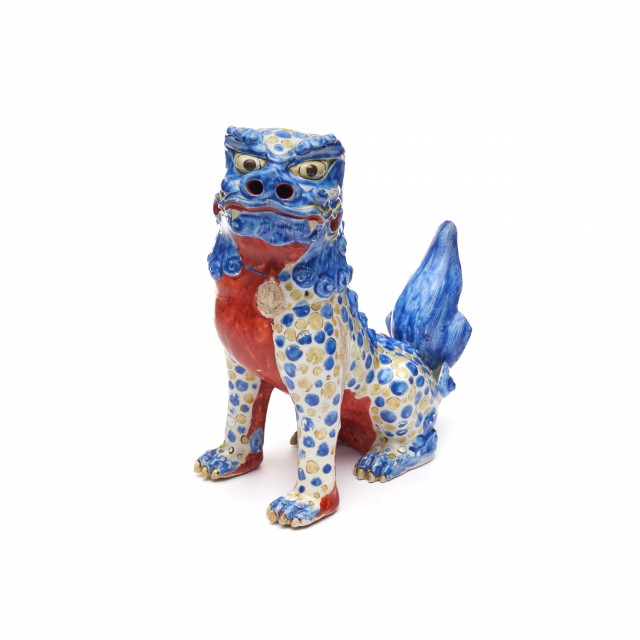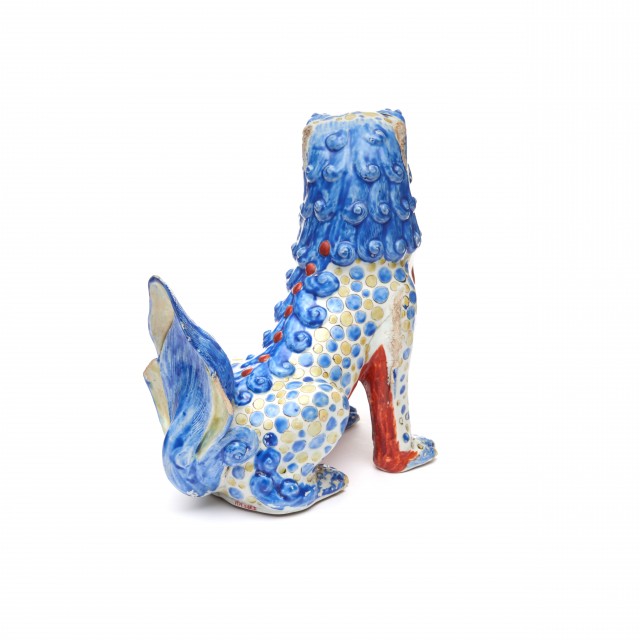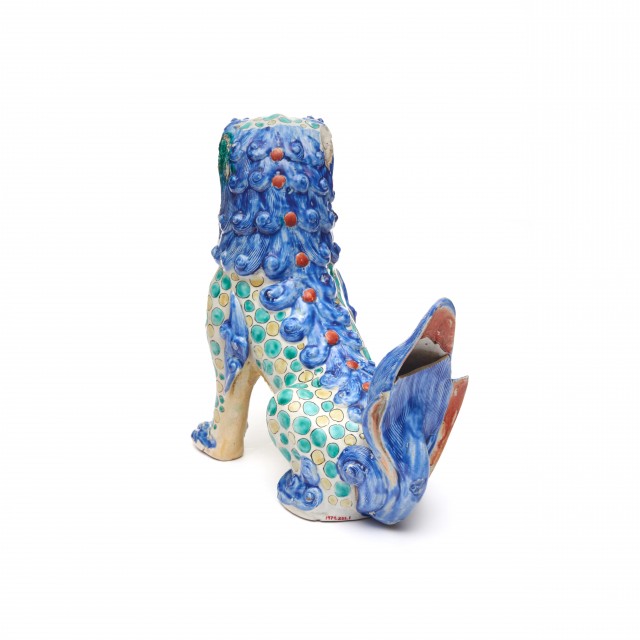Two Lion-Dogs

Photography by Synthescape, Digital image © Asia Society

Photography by Synthescape, Digital image © Asia Society

Photography by Synthescape, Digital image © Asia Society

Photography by Synthescape, Digital image © Asia Society
Two Lion-Dogs
Late 17th century
Japan, Saga Prefecture
Porcelain painted with overglaze enamels (Arita ware, Kakiemon style)
Each, H. 11 5/8 x L. 10 3/4 x W. 5 3/4 in. (29.5 x 27.3 x 14.6 cm)
Asia Society, New York: Mr. and Mrs. John D. Rockefeller 3rd Collection, 1979.238.1-2
Provenance
John D. Rockefeller 3rd, New York, NY; acquired from K.J. Hewett, London, England, August 1968.
The Asia Society, New York, NY, bequest of John D. Rockefeller 3rd, New York, NY, 1979.
Licensing inquiries
This pair of large, ferocious looking Chinese lion-dogs, one with its mouth closed and the other open, is elaborately decorated with multi-colored dots covering almost the entirety of their bodies. Lion-dog figures, imported from Chinese sources, were generally used as guardians at entrances to Buddhist temples and Shinto shrines. The earliest extant example of this theme was made of wood. Colorfully decorated porcelain statues, some even embellished with bright gilt mounts, were often exported to Europe, and illustrate more the extravagant (secular) tastes of late 17th-early 18th century Europeans than that of contemporary Japanese.



